Belding Wildlife Management Area (original) (raw)
Belding Wildlife Management Area
Learn About Wildlife Habitat at Belding WMA
Species of the Week
Habitat History
Native Landscaping
Get a Listing of Belding WMA Events 
The Belding Wildlife Management Area is a 282-acre parcel of land in Vernon that was donated by Maxwell Belding to the State of Connecticut. A 1981 Memorandum of Understanding identifies the Department of Energy and Environmental Protection as the steward of the land and instructs the agency to use modern wildlife, forestry, and conservation practices to maintain and improve the land. In 2002, the Belding Wildlife Management Area Charitable Support Trust was established to provide the DEEP the resources to conduct professional management, enhancement, and long-term maintenance of the area. A board of trustees was established and remains in force to provide oversight of the trust and to review and approve ongoing activities on the management area. Loss of habitat is the biggest threat facing wildlife. Belding WMA provides a variety of habitat types, including fields, forest, and wetlands. Birds, such as indigo buntings and blue-winged warblers, inhabit the field edges. Black-throated green warblers and red-breasted nuthatches can be heard in the conifer forest. Ground-dwelling ovenbirds and waterthrush sing from the forest floor and along the stream. Woodcock return each spring to perform their courtship display, and wood frogs gather in vernal pools where their chorus can be heard on the first warm day of spring. A variety of birds migrate through Belding WMA along the Tankerhoosen River. The section of the Tankerhoosen within Belding WMA is a Class 1 Wild Trout Management Area. Wild brown and brook trout thrive in the clean, cool water of the Tankerhoosen. Programs offered at Belding WMA include seasonal walks to learn about the plants and animals that can be found at the area. School groups use Belding as an outdoor classroom, and to learn about habitats and the species that depend on them. Belding WMA staff also provides environmental educational programs at area schools and libraries.
For more information about Belding WMA, including programs or projects, please send an E-mail to deep.belding@ct.gov. For a safe and enjoyable visit, and to help protect the wildlife of Belding WMA, please observe the following rules:
- Dogs must be on a leash no longer than 7 feet at all times.
- Carry out what you carry in.
- Motorized vehicles, horses, and horseback riding are prohibited.
- Collecting of plants and wildlife or feeding of wildlife are prohibited.
- Be careful of poison ivy along trails and check yourself carefully for ticks.
Belding WMA Trail Guide
Belding WMA Trail Guide (Printable)
The Birds of Belding WMA (checklist) -- the checklist is currently under revision and will be available soon.
Remembering Maxwell M. Belding: A True Connecticut Conservationist
We are saddened by the passing of Maxwell (Max) Belding in 2021. Through his vision and generosity, Mr. Belding was responsible for protecting hundreds of acres of precious natural resources in Vernon, Connecticut -- including the Belding Wildlife Management Area. Read an article published in Connecticut Wildlife magazine that pays tribute to Mr. Belding.
Field Trips Resume at Belding WMA
Elementary school field trips to the Belding Wildlife Management Area resumed in September after COVID-19 restrictions had put these trips on hold for a year and a half. Fourth-graders from all five elementary schools in Vernon came out for full days of learning. Master Wildlife Conservationists Bernie Noonan, Daryl Gottier, and Jean Laughman, and Master Naturalist Lynn Kochiss taught the students about the wildlife and habitats of Belding WMA.
For six days, students arrived in the morning and spent the day visiting four different habitats – field, forest, stream, and pond. In the forest, students learned about the process of forest succession and how different stages of succession are important to different species of wildlife. They were treated to the sights and sounds of chickadees, woodpeckers, nuthatches, white-throated sparrows, phoebes, and a catbird.

Fourth-graders get excited about the birds they see in the forest at Belding WMA.
At the stream, they learned about the habitat requirements of wild trout, including gravelly stream bottoms where their eggs can "breathe". The Tankerhoosen River at Belding WMA, a Class 1 wild trout stream, is surrounded by lots of trees and other vegetation which helps prevent sediment from eroding into the stream and suffocating the trout eggs. To demonstrate the process of erosion, the students constructed miniature rivers and watched what happened when water flowed through. The miniature rivers that had more “vegetation” along the edges had cleaner water.

To demonstrate the process of erosion, students constructed miniature streams.
At the pond, the students got to see tiny pond critters, such as dragonfly and damselfly larvae, daphnia, isopods, nematodes, and aquatic beetles, using magnifying lenses. They also played a game that demonstrates the process of bioaccumulation, which occurs when contaminants get into the water and make their way up the food chain. Some of the groups were lucky enough to see a solitary sandpiper hunting for invertebrates at the edge of the pond.

Fourth-graders get a close-up look at pond invertebrates.
In the field, the fourth-graders learned about insects, listened to the autumn insect chorus, and caught and sketched crickets and grasshoppers. As the famous biologist Edward O. Wilson said, “Insects are the little things that run the world.” The students saw pollination in action at the pollinator garden, and peered through microscopes to get a close-up look at the components of soil.
As part of the Connecticut Science Standards, students must learn that animals depend on their habitats to survive. Field trip participants at Belding WMA learn that different animals live in different types of habitats, and that all animals need enough space to find all of the food, water, and shelter they need to survive and reproduce. They also learn about adaptations, such as camouflage, that help animals survive in their environments. At the end of the field trip, the students are able to identify animals that use each of the habitats they visited and are well aware of what happens to an animal when its habitat disappears.

Students match animals with their habitats.
Educating young people about wildlife and conservation was one of the main goals set forth by Max Belding when he donated the property to the DEEP. This cooperative program with the Vernon school system is a big step in fulfilling his vision.
Young Forest Habitat Created at Belding WMA
Over 200 species of birds, mammals, reptiles, and amphibians depend on shrublands and young forest. Populations of 50 of these species are declining. These declines are due to the loss of shrubland and young forest habitat. Work began last fall to create young forest habitat at Belding WMA.
Belding WMA currently has fields and mature forest, but very little young forest. In the past, young forest was created after natural disturbances. Wildfires burned trees. Beavers cut down trees and flooded many more. Hurricanes and tornadoes blew down trees. After these natural disturbances, the forest grew back. As shrubs and tree seedlings began to grow, this created the shrubland and young forest habitat that many of Connecticut’s animals depend on.
Today, Connecticut has become very developed. To protect roads and buildings, wildfires are no longer allowed to burn and cutting and flooding by beavers is curtailed. Most young forest habitat now occurs where timber has been harvested.
The first phase of this habitat project removed mature oaks to allow the oak seedlings in the understory to grow. Once sunlight reaches the seedlings, they will grow to create much needed young forest habitat. Birds such as blue-winged warbler, eastern towhee, hooded warbler, and Baltimore oriole are expected to move in.
This fall, a second forest cut will be implemented. It will target the non-native Norway spruce. Non-native plants, such as Norway spruce, do not provide food for insects. Birds depend on insects for food. Native plants provide food for the insects that birds need to survive. Young native trees will replace the non-native trees that are removed.
To learn more about Connecticut’s habitats and species of Greatest Conservation Need, see Connecticut’s Wildlife Action Plan, Connecticut's Young Forest Habitat Initiative, and The Young Forest Project.
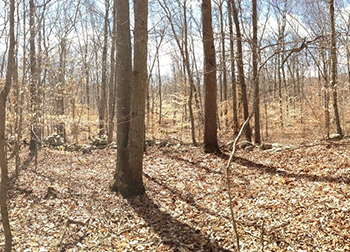
Before a forest cut on land trust property, where there are very few places for wildlife to hide and find food.
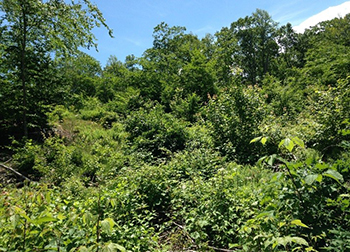
After a forest cut on land trust property, where it is teeming with more wildlife than ever!
For more information on the history of habitats in Connecticut and the importance of native plants, please see the Habitat History and Native Landscaping slide shows below. Use the arrow keys on your keyboard to advance the pages.
Educational Slideshows About Belding WMA
Wildlife Habitats: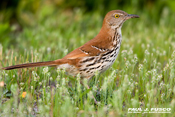 A History of Change for Connecticut's Wildlife
A History of Change for Connecticut's Wildlife
Habitat History Slideshow - 72 Slides
(Use the "left" and "right" arrowkeys on your keyboard to navigate each PDF as a slideshow.)
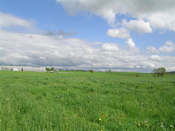 When the settlers first arrived in Connecticut, they encountered mostly mature forests. But, grasslands, shrublands, and young forests could also be found across the landscape. Natural processes created these habitats, which a wide variety of birds and other animals depended on. Today, as these habitats disappear, so do the animals that need them. While development has been the major cause of this decline, another reason is the process known as forest succession. Find out how the Connecticut landscape has changed and how we are bringing back these special habitats.
When the settlers first arrived in Connecticut, they encountered mostly mature forests. But, grasslands, shrublands, and young forests could also be found across the landscape. Natural processes created these habitats, which a wide variety of birds and other animals depended on. Today, as these habitats disappear, so do the animals that need them. While development has been the major cause of this decline, another reason is the process known as forest succession. Find out how the Connecticut landscape has changed and how we are bringing back these special habitats.
Native Landscaping: Bring Wildlife to Your Yard with Native Plants

Full Version - 130 Slides Condensed Version - 50 Slides
(Use the "left" and "right" arrowkeys on your keyboard to navigate each PDF as a slideshow.)
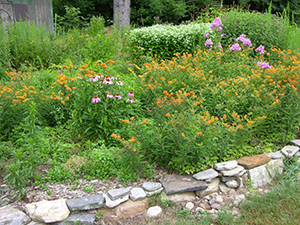 How can you help your backyard wildlife? Plant native plants!
Maintaining a manicured lawn decorated with ornamental plants used to be the norm, but many animals disappeared as we took away their food sources and shelter. But, we can bring them back! Planting native plants provides food for the most important component of the food web - insects! An array of plant-eating insects, like moth and butterfly caterpillars, are a major food source for backyard birds. Even those that feed from bird feeders depend on these insects to survive. Learn more about landscaping and wildlife with this Native Landscaping slideshow, which also provides a list of native plants.
How can you help your backyard wildlife? Plant native plants!
Maintaining a manicured lawn decorated with ornamental plants used to be the norm, but many animals disappeared as we took away their food sources and shelter. But, we can bring them back! Planting native plants provides food for the most important component of the food web - insects! An array of plant-eating insects, like moth and butterfly caterpillars, are a major food source for backyard birds. Even those that feed from bird feeders depend on these insects to survive. Learn more about landscaping and wildlife with this Native Landscaping slideshow, which also provides a list of native plants.
The Connecticut Native Tree and Shrub Availability List is a directory of Connecticut businesses that grow and/or sell native trees and shrubs. This publication was compiled by the CT DEEP Wildlife Division and UCONN Extension Service from a survey of wholesale and retail businesses.
Species of the Week
Belted Kingfisher
(Megaceryle alcyon)

For a bird of its size, the belted kingfisher has a very big head and very small feet. As its name implies, the kingfisher eats fish but will also eat crayfish, frogs, and insects. Its large head serves as an anchor for the strong muscles needed to clamp down and hold on to slippery fish.
Belted kingfishers can be found along rivers and ponds with clear water. They hunt by diving into the water from a perch, often a dead branch hanging over the water, or by hovering above the water before plunging in head first. Their long pointy bills are well suited for catching fish which they strike against a branch to stun and then swallow head first.
Female and male belted kingfishers are similar in appearance except for the rusty-red “belt” worn by the female. The kingfisher is one of the few species of birds where the female is more brightly colored than the male.
Kingfishers nest in burrows they dig into vertical river banks. The tunnel slopes upward from the entrance, which keeps rainwater from collecting inside. With their acidic stomachs, nestlings are able to digest fish scales and bones, but adults regurgitate these parts in pellets that can sometimes be found near their perches.
Belted kingfishers are often heard before they are seen. Their loud rattling call can be heard as they fly along the Tankerhoosen River, searching for prey in the deeper pools. As long as the river does not freeze over and the water continues to flow, these birds will be able to find food here throughout the year. Listen to the kingfisher’s call courtesy of the Eastern Ecological Science Center.
Black-and-gold Bumble Bee
(Bombus auricomus)
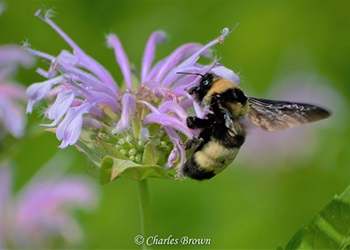
Previously, the black-and-gold bumble bee had not been recorded in Connecticut for over 100 years! Thanks to community science efforts, in 2021, three individuals were observed in three different parts of the state! The individual pictured here was observed at Belding WMA on July 16, 2021.
The black-and-gold bumble bee is native to the eastern half of the United States. It is mostly found in prairies and grasslands but is now uncommon due to the re-growth of forests and loss of grassland habitat.
In Connecticut, there are about 15 species of bumble bees, including the federally-endangered rusty-patched bumble bee and the state-threatened yellow-banded bumble bee.
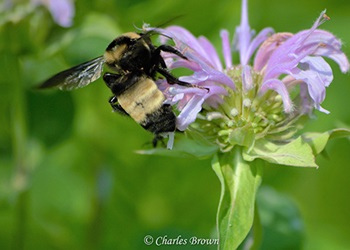
Bumble bee declines are very concerning as the bees are important pollinators for both native plants and agricultural crops. In addition to loss of habitat, bumble bees are facing many threats, including pesticides, diseases spread from commercially-raised bees, and even competition from honey bees.
Bumble bees are generally active from April to October. Most species nest on or in the ground, although some species will also nest in hollow trees, logs, or man-made structures.
They feed on the nectar and pollen of a great variety of flowers. Certain bumble bee species prefer specific types of flowers, but in general, they are often seen visiting clovers, milkweed, bee balm, and goldenrods.
It can be difficult to identify different bumble bees, especially as they are flying from flower to flower. Each species has different amounts of yellow hairs on their thorax (the second body section, next to the head) and abdomen (the third body section, furthest from the head) which help to tell them apart.
To learn more about bumble bees in Connecticut, including how to identify them, check out these guides: Bumble Bees of the Eastern US and CT Bumble Bees.
If you think you see an interesting bumble bee, take some photos, post them to iNaturalist, and let the experts help identify it.
Habitat Projects at Belding WMA
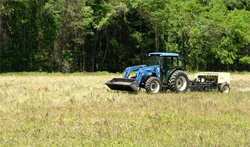 DEEP is responsible for maintaining a diversity of fish and wildlife habitats at Belding WMA. Several projects are currently underway at the area to benefit special habitats or unique species. For example, American chestnut and pitch pine are found on the property and projects have been implemented to help preserve these rare trees. Active management to create, maintain, and expand grasslands and shrublands, both disappearing habitats, is ongoing. Invasive plants are in the process of being removed and riparian habitats are being restored.
DEEP is responsible for maintaining a diversity of fish and wildlife habitats at Belding WMA. Several projects are currently underway at the area to benefit special habitats or unique species. For example, American chestnut and pitch pine are found on the property and projects have been implemented to help preserve these rare trees. Active management to create, maintain, and expand grasslands and shrublands, both disappearing habitats, is ongoing. Invasive plants are in the process of being removed and riparian habitats are being restored.
Ongoing Habitat Maintenance:
- Invasive plants are selectively mowed within 24 acres of grassland to maintain the grassland habitat.
- Invasive shrubs are removed to reduce competition with native shrubs.
- White pines are selectively removed to reduce competition with pitch pines.
- Trees encroaching into grassland habitat are removed.
Timeline of Habitat Projects:
2007
- 540 native shrubs were planted on 3 acres and protective fencing was installed.
- 6 acres of cool-season grass were burned and native warm-season grasses were planted.
2008
- 4 acres of wildflower seeds were planted.
- 1,050 native shrubs were planted.
- 3 acres of competing hardwood trees were cut to release pitch pines.
2009
- A 2.5-acre site was cleared, 225 blight-resistant American chestnut seedlings were planted, and protective fencing was installed.
- Tree lines were removed between fields to expand grassland habitat.
- 150 native shrubs were planted along Railroad Brook.
2010
- A pavilion was constructed near the parking area on Bread and Milk Road.
- A post-and-rail fence was installed along the fields on Bread and Milk Road.
2011
- A tree line between warm season grass fields was removed to increase grassland habitat.
- Gates were installed to protect the fields.
2012
- Post-and-rail fencing was installed along Valley Falls Road.
2013
- A forest inventory was conducted.
2014
- A third pollinator garden was created.
How to Get There

Parking for Belding Wildlife Management Area is located at Bread and Milk Road in Vernon, CT.
Useful Links
Connecticut Forest and Park Association
Patuxent Wildlife Research Center
| Native Shrubs Planted at Belding WMA | |
|---|---|
| Shadbush (Amelanchier laevis) | Northern bayberry (Morella pensylvanica) |
| Red chokeberry (Aronia arbutifolia) | Swamp rose (Rosa palustris) |
| Silky dogwood (Cornus amomum) | Virginia rose (Rosa virginia) |
| Flowering dogwood (Cornus florida) | Pussy willow (Salix discolor) |
| Gray dogwood (Cornus racemosa) | Lowbush blueberry (Vaccinium angustifolium) |
| Redosier dogwood (Cornus sericea) | Highbush blueberry (Vaccinium corymbosum) |
| American hazelnut (Corylus cornuta) | Arrowwood (Viburnum dentatum) |
| Inkberry (Ilex glabra) | American cranberrybush (Viburnum trilobum) |
| Winterberry (Ilex verticillata) | Blackhaw viburnum (Viburnum prunifolium) |
| Eastern redcedar (Juniperus virginiana) |
Useful Links
Alternatives for Invasive Ornamental Plant Species
Connecticut Invasive Plant Working Group
USDA Natural Resources Conservation Service Plants Database
Pitch Pine Restoration
A project to restore native pitch pines was initiated in 2008. Pitch pine woodland, a globally rare forest type, is found only in the northeastern United States. Pitch pines depend on fire to expose the soil and release the seeds. Due to fire suppression, pitch pine communities have become increasingly rare.
Belding WMA contains mature pitch pines, but young pitch pines have not been able to grow there for more than 50 years. A three-acre site where mature pitch pines are currently growing has been chosen for this regeneration project. In order to restore this unique habitat, common tree species that were competing with the pitch pines have been removed. The soil will be exposed to allow the pitch pine seeds to germinate.
As the seedlings become established, the young stand of pitch pine will provide important cover for species that depend on this type of early successional habitat. Wildlife species associated with this type of disturbance-dependent habitat include whip-poor-will, prairie warbler, and brown thrasher, a species of special concern in Connecticut.
American Chestnut Restoration
The DEEP, in partnership with the Connecticut Agricultural Experiment Station (CAES), introduced blight-resistant American chestnut trees to the Belding Wildlife Management Area (WMA) in Vernon this past May. The American chestnut was once a dominant tree of the eastern forests. It was an extremely valuable source of lumber as its wood is highly resistant to rot. In addition, chestnuts produced edible nuts that were an important food source for wildlife. Unfortunately, a non-native, imported fungus, discovered in New York City in 1904, spread quickly and decimated American chestnuts throughout their range. The blight cannot exist in the soil, so even though it kills the trees, it does not kill the roots. Many of these persisting roots continue to grow new sprouts, but the sprouts become infected by the blight and die before reaching maturity.
Dr. Sandy Anagnostakis of the CAES has been breeding blight-resistant American chestnuts as part of an effort to save this tree from extinction. The DEEP planted 200 of these seedlings on a 2.5-acre site within Belding WMA where native chestnut sprouts are abundant. The abundance of native chestnut sprouts on the site is a critical factor in the reestablishment of this valuable species as a key component of Connecticut’s forested landscape. The native sprouts will be inoculated against the blight until they reach maturity and can cross-pollinate with the blight-resistant seedlings. The offspring of these crosses will result in trees that are genetically similar to the trees that were native to the site, but will also carry the genes that resist the blight.
Because American chestnut seedlings require full sunlight, the overstory trees on the restoration site were cleared by a forestry contractor. As the planted chestnut trees grow, the oaks, maples, and birch will grow up with them, resulting in a more diverse forest.
Grassland Restoration
The Wildlife Division initiated a project in 2008 at the Belding Wildlife Management Area to remove invasive shrubs and increase grassland habitat in the fields along Valley Falls Road. Two hedgerows of trees and invasive shrubs that had grown up between the fields were removed to create one larger field. Larger grasslands attract a wider diversity of wildlife.
Early successional habitats (grasslands, shrublands, and young forests) have become rare due to the elimination of disturbances, such as fire and beaver flooding, that historically created or maintained these types of habitats. Livestock grazing is another type of disturbance that maintains grassland habitat, but pastures also have been disappearing from the Connecticut landscape. As these early successional habitats disappear, so do the species that depend on them.
Grasslands are home to a variety of native wildlife. Birds such as bobolink, eastern meadowlark, red-winged blackbird, and field sparrow nest on the ground in grasslands. Twelve species of grassland-dependent birds are on Connecticut’s List of Endangered, Threatened, and Special Concern Species. The most endangered of these species are those that require large areas. The state-endangered grasshopper sparrow prefers sites of at least 100 acres. Upland sandpipers require grasslands of 150 acres or more.
Hayfields attract grassland ground nesters, but early mowing destroys the nests before the chicks fledge. The DEEP mows areas after the nesting season to maintain grassland habitat. Without mowing or other type of disturbance, these fields would eventually revert to forest. Lawns, which are mowed regularly throughout the season, are not considered grasslands and provide little value for wildlife.
Species that inhabit the fields and field edges at Belding Wildlife Management Area include eastern bluebirds, tree swallows, red-winged blackbirds, indigo buntings, eastern kingbirds, song sparrows, red-tailed hawks, blue-winged warblers, and yellow warblers. Small mammals, such as meadow voles and meadow jumping mice, also are found in these fields, as well as a variety of butterflies, moths, dragonflies, damselflies, and other insects.
Content last updated on November 12, 2024